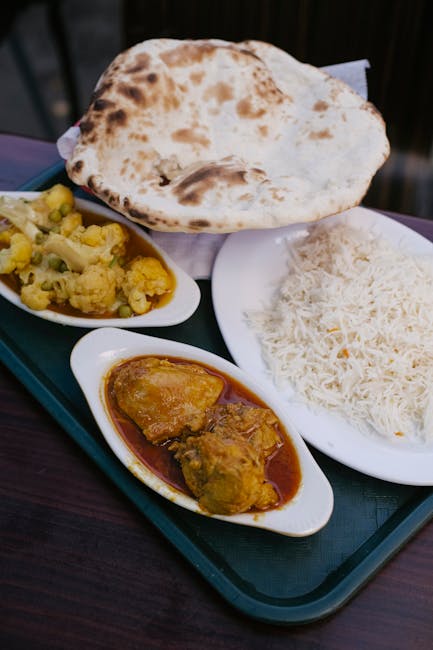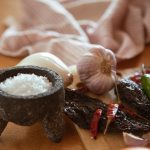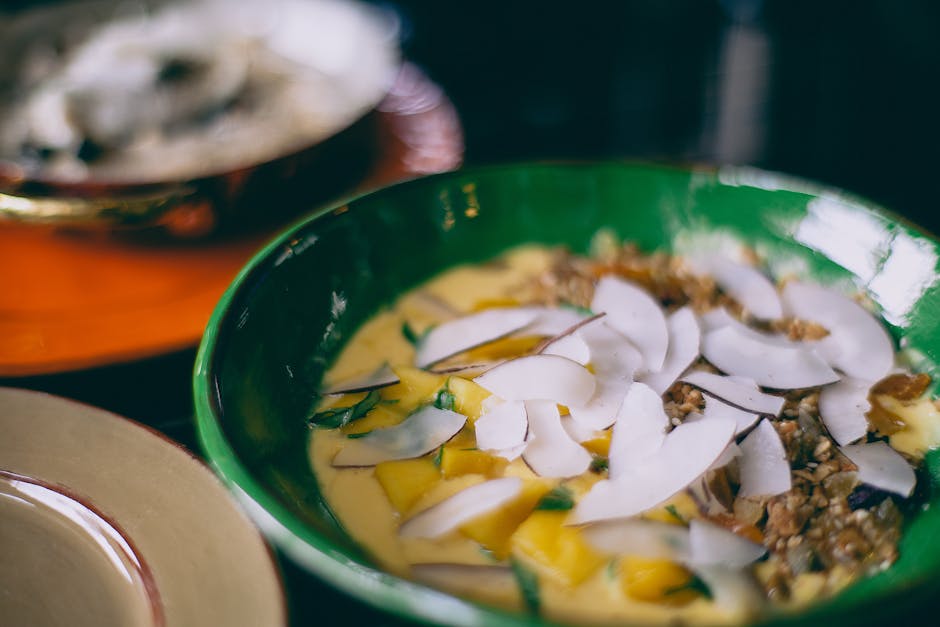Fried rice, a culinary cornerstone across much of Asia, boasts a history as rich and varied as its ingredients. While pinpointing its exact origin is difficult, scholars generally agree its evolution began in China, likely during the Song Dynasty (960-1279 AD). Early forms likely involved leftover rice being repurposed creatively, a testament to the resourceful nature of ancient cuisines. The practicality of using day-old rice, which fries better than freshly cooked rice due to its lower moisture content, contributed significantly to its widespread adoption. The dish then spread across Asia through trade routes and cultural exchange, evolving into the countless regional variations we see today. It’s fascinating to note that what constitutes fried rice varies dramatically across different countries and even regions within a single country. The core ingredients – rice and some form of protein – remain constant, but the additions of vegetables, sauces, and spices are incredibly diverse.
Cauliflower fried rice, a more recent adaptation, speaks to the ongoing evolution of this beloved dish. It emerged as a clever and healthy alternative to traditional fried rice, capitalizing on the rising global popularity of cauliflower as a low-carb, versatile vegetable. Its popularity, fueled by health-conscious consumers and the abundance of online recipes, has exploded in recent years. While precise statistics on cauliflower rice consumption are hard to come by, its prominence in health food blogs, supermarkets, and restaurant menus strongly suggests a significant and rapidly growing market share. The substitution of cauliflower rice for traditional rice not only reduces the carbohydrate content but also adds a subtle nutty flavour and a slightly different texture, creating a unique culinary experience.
The cultural significance of fried rice extends beyond its simple ingredients and preparation. It represents resourcefulness, adaptability, and a celebration of leftovers – values deeply embedded in many Asian cultures. In many parts of Asia, fried rice is not just a dish; it’s a symbol of comfort, familiarity, and often, a cherished family tradition. Street vendors often offer variations, making it a universally accessible and affordable meal. Its adaptability also makes it a perfect canvas for showcasing regional specialties and culinary creativity. The emergence of cauliflower fried rice speaks to this same adaptability, highlighting the dish’s ongoing evolution and its ability to incorporate modern dietary trends while retaining its core appeal. This recipe, therefore, offers a delicious and healthy twist on a globally beloved classic, bringing together the best of both worlds: healthy eating and the comforting familiarity of a timeless dish.
Ingredients and Measurements
This recipe for Easy Cauliflower Fried Rice utilizes readily available ingredients and precise measurements to ensure consistent results. Accurate measurements are crucial for achieving the desired texture and flavor balance. We recommend using a kitchen scale for the best accuracy, especially when measuring the cauliflower rice.
Cauliflower Rice: You’ll need 1 large head of cauliflower (approximately 1.5-2 lbs), riced. This can be done using a food processor fitted with a grating blade, a box grater, or even by hand, although the latter is more time-consuming. Aim for a rice-like consistency, avoiding overly large or small pieces. If using a food processor, pulse the cauliflower in short bursts to prevent it from becoming mushy. Smaller pieces will cook faster and more evenly, leading to a better texture in the final dish.
Protein (Optional): Feel free to add your favorite protein! This recipe is easily adaptable. We suggest 1 cup of cooked protein, such as diced chicken breast (about 6 oz), shrimp (about 6 oz peeled and deveined), or scrambled tofu (about 10 oz pressed and cubed). Ensure your protein is cooked thoroughly before adding it to the fried rice. Pre-cooked protein saves time and prevents overcooking during the stir-fry process.
Vegetables: For a vibrant and flavorful fried rice, we recommend including a variety of vegetables. Use 1/2 cup of chopped scallions (both white and green parts), 1/2 cup of chopped carrots (about 1 medium carrot), and 1/2 cup of frozen peas (or other frozen vegetables like corn or edamame). Finely chopping the vegetables ensures even cooking and prevents large pieces from overpowering the dish. Frozen vegetables are convenient and work well in this recipe.
Sauce: The sauce is key to achieving the authentic fried rice flavor. You will need 2 tablespoons of soy sauce (low sodium preferred), 1 tablespoon of oyster sauce (optional, but adds depth of flavor), 1 tablespoon of sesame oil (toasted sesame oil is recommended for its richer aroma), and 1 teaspoon of rice vinegar. Adjust the amount of soy sauce to your taste preference. Start with the recommended amount and add more if you prefer a saltier flavor. The oyster sauce adds a savory umami note, but can be omitted if you have dietary restrictions or preferences.
Seasoning: A pinch of black pepper and 1 teaspoon of garlic powder are essential for enhancing the overall flavor profile. You can also add a pinch of red pepper flakes for a spicy kick, depending on your preference. Don’t be afraid to adjust seasonings to your liking. Taste the fried rice as you’re cooking and add more seasoning as needed.
Oil: Use 1 tablespoon of vegetable oil or your preferred high-heat cooking oil for stir-frying. This amount is sufficient for cooking the cauliflower rice and vegetables without making the dish overly oily. Using a neutral-flavored oil is recommended so it doesn’t compete with the other flavors in the dish.
Optional additions: Consider adding a scrambled egg (1 large egg) for extra protein and richness. A sprinkle of sesame seeds at the end adds a nice textural contrast and visual appeal. Chopped green onions can be used as a garnish for added freshness.
Equipment List
Making delicious and easy cauliflower fried rice requires the right tools to ensure efficient and consistent results. While you might already have many of these items in your kitchen, paying attention to the specifics can significantly improve your cooking experience. This equipment list details what you’ll need, along with recommendations for optimal performance.
1. Large Wok or Skillet (12-14 inches): A wok is traditionally used for fried rice due to its sloped sides, promoting even cooking and easy tossing. However, a large, heavy-bottomed skillet (12-14 inches in diameter) works equally well. Avoid using non-stick pans for high-heat cooking, as they can be damaged. The larger surface area allows for proper distribution of the cauliflower rice and other ingredients, preventing overcrowding and ensuring even browning.
2. Cutting Board (Large): You’ll need a spacious cutting board to comfortably chop the cauliflower and other vegetables. A large, sturdy cutting board (at least 12×15 inches) made of wood or high-quality plastic is recommended. Avoid using glass cutting boards, as they can dull knives quickly.
3. Chef’s Knife (8-inch): A sharp chef’s knife is essential for efficiently chopping the cauliflower into rice-like pieces. An 8-inch blade offers the perfect balance of control and cutting power. A dull knife will make the process tedious and potentially dangerous. Regular sharpening is crucial for maintaining its effectiveness and safety.
4. Vegetable Peeler: If using fresh cauliflower, a sharp vegetable peeler is useful for removing any tough outer leaves. A comfortable grip and sharp blade will make this task quick and efficient.
5. Measuring Cups and Spoons: Accurate measurements are key to achieving the desired flavor and texture. Invest in a reliable set of measuring cups and spoons, preferably stainless steel or high-quality plastic. Avoid using mismatched or worn-out measuring tools, as this can significantly affect the final dish.
6. Rice Cooker (Optional, but Recommended): While not strictly necessary, a rice cooker can be incredibly helpful in preparing the cauliflower rice ahead of time. It allows for even steaming and consistent texture, saving you time and effort. If you choose not to use a rice cooker, a steamer basket over boiling water will suffice.
7. Spatula or Tongs: You’ll need a sturdy spatula or tongs for efficiently stirring and tossing the ingredients in the wok or skillet. A heat-resistant spatula is preferred to avoid melting or warping. Choose a spatula with a wide, flat blade for effective mixing.
8. Serving Bowl or Platter: Once your cauliflower fried rice is ready, you’ll need a nice serving bowl or platter to present it attractively. The size of the bowl should be appropriate for the amount of fried rice you’ve prepared.
9. Colander: If you are steaming or ricing your cauliflower, a colander is essential for rinsing and draining excess water.
Having all these tools readily available will streamline the cooking process and allow you to focus on creating a delicious and satisfying meal. Remember to prioritize safety and always use sharp, well-maintained equipment.
Preparation of Cauliflower Rice
Creating the perfect cauliflower rice is the cornerstone of a delicious and healthy cauliflower fried rice. This section details how to achieve the ideal texture and consistency for your dish. We’ll be using approximately 1 medium-sized head of cauliflower, yielding roughly 4 cups of riced cauliflower.
First, thoroughly wash the cauliflower head under cold running water. Remove any outer leaves that are discolored or wilted. It’s crucial to remove as much moisture as possible from the cauliflower before ricing, as excess water will make the final dish soggy.
Next, we’ll prepare the cauliflower for ricing. You can achieve this using several methods. The most efficient method is using a food processor fitted with a grating blade. Cut the cauliflower into smaller florets – roughly 1-2 inches in size – to ensure they fit easily into the food processor. Avoid overly large pieces, as they might not process evenly, resulting in a mixture of rice-like pieces and larger chunks.
Alternatively, you can use a box grater, but this method is significantly more time-consuming and requires more effort. Grate the cauliflower florets using the finest grating side of the box grater. Again, aim for consistent sizing to maintain a uniform texture in your final dish. Using the box grater may also result in more moisture being released from the cauliflower, so be sure to pat it dry thoroughly later.
Regardless of the method you choose, once the cauliflower is riced, transfer it to a large bowl. Now, it’s time to remove excess moisture. This step is absolutely critical to the success of your cauliflower fried rice. Use a clean kitchen towel or paper towels to thoroughly press and squeeze the riced cauliflower, removing as much water as possible. This will prevent the fried rice from becoming watery and will help it to brown and crisp up nicely when cooked.
You can even go a step further by spreading the riced cauliflower on a clean kitchen towel and letting it sit for 10-15 minutes to further absorb excess moisture. This extra step is especially beneficial if you are using a box grater or find that your riced cauliflower is particularly moist. This extra step significantly improves the texture and prevents a mushy result.
Once the cauliflower is sufficiently dry, you’re ready to move on to the next step in making your delicious cauliflower fried rice. Remember, the key to perfectly textured cauliflower rice lies in thorough preparation and the effective removal of excess moisture.
Vegetable Preparation for Easy Cauliflower Fried Rice
Proper vegetable preparation is key to achieving the perfect texture and flavor in your cauliflower fried rice. This section details the steps for preparing the vegetables, ensuring your dish is both delicious and visually appealing.
We’ll be using 1 large head of cauliflower (approximately 2 pounds) as the base of our rice. Begin by removing the green outer leaves and the tough core. Discard any visibly damaged or discolored florets.
Next, we need to rice the cauliflower. You can achieve this in a few ways. The easiest method is using a food processor fitted with a grating blade. Cut the cauliflower into florets of roughly uniform size, ensuring they are small enough to fit comfortably into the food processor’s feed tube. Pulse the cauliflower in short bursts until it resembles rice-sized pieces. Avoid over-processing, as this can lead to mushy cauliflower rice . If you don’t have a food processor, you can use a sharp knife and carefully chop the cauliflower into small, even pieces. This method will take longer but will yield similar results.
Once the cauliflower is riced, transfer it to a large bowl and set aside. We’ll be adding this to the wok towards the end of the cooking process.
Now, let’s prepare the other vegetables. We’ll need 1 medium onion (about 1 cup chopped), 2 carrots (about 1 cup chopped), 1 red bell pepper (about 1 cup chopped), and 2 scallions (finely chopped for garnish). For consistent cooking, ensure all vegetables are roughly the same size. This promotes even cooking and prevents some ingredients from becoming overcooked while others remain undercooked.
For the onion, carrots, and bell pepper, start by peeling and washing them thoroughly. Then, finely chop the onion. Peel the carrots and chop them into small, roughly 1/4-inch pieces. Wash and core the bell pepper and then chop it into similarly sized pieces as the carrots. Consistent sizing is crucial for even cooking.
Professional Tip: For a crispier texture in your fried rice, you can briefly blanch the carrots and bell peppers before adding them to the wok. Blanching involves quickly boiling the vegetables for a minute or two, then immediately plunging them into ice water to stop the cooking process. This helps to retain their vibrant color and crispness.
Finally, finely chop the scallions. Keep the white and green parts separate; we’ll add the white parts to the wok with the other vegetables, and the green parts will be used as a garnish at the end, adding a fresh pop of color and flavor.
With your vegetables prepped and ready to go, you’re one step closer to enjoying a flavorful and healthy cauliflower fried rice! Remember to keep all chopped vegetables separate until ready to use to prevent them from becoming soggy.
Stir-frying Techniques
Stir-frying is a quick and efficient cooking method that relies on high heat and constant movement. Mastering the technique is key to achieving perfectly cooked cauliflower fried rice. This section will guide you through the process, ensuring your dish is flavorful and delicious.
Preparation is paramount. Before you even turn on the stove, ensure all your ingredients are prepped and ready to go. This includes chopping your cauliflower into bite-sized florets (about ½ inch), finely dicing your vegetables (like onions, carrots, and scallions – approximately 1/2 cup total, chopped), and measuring out your sauces. Having everything measured and within easy reach will prevent delays and ensure even cooking.
Wok Hei: The Essence of Stir-frying. The elusive wok hei is often described as a smoky, slightly charred flavor imparted to food through high-heat stir-frying in a wok. While achieving authentic wok hei requires a specialized wok and considerable experience, we can approximate it with a well-seasoned large skillet or wok and a very hot surface. Use a high-heat-tolerant oil like peanut oil or vegetable oil (approximately 2 tablespoons). The oil should be shimmering but not smoking before adding ingredients.
Order of Operations: The Importance of Timing. The order in which you add ingredients matters significantly. Start with the ingredients that take the longest to cook. In our cauliflower fried rice, this usually means adding the cauliflower florets first. Stir-fry the cauliflower for about 3-4 minutes, until it begins to soften slightly but still retains some texture. Then, add your onions and carrots, continuing to stir-fry for another 2-3 minutes. Don’t overcrowd the pan; if necessary, work in batches to ensure even cooking and browning.
Constant Motion: The Key to Success. Stir-frying is not a passive process. You must constantly move the ingredients around the pan using quick, sweeping motions. This ensures even heat distribution and prevents sticking or burning. Use a spatula or wok spoon to lift and toss the ingredients, keeping them in constant contact with the hot surface. This continuous movement is what creates the characteristic texture of stir-fried dishes.
Seasoning and Sauce. Once the vegetables are nearly cooked, add your sauces. For our cauliflower fried rice, this might include soy sauce (about 2 tablespoons), oyster sauce (1 tablespoon), and a touch of sesame oil (1 teaspoon). Stir-fry for another minute, allowing the sauce to coat the ingredients evenly. Taste and adjust seasoning as needed. You can add a pinch of salt, pepper, or sugar to balance the flavors.
Finishing Touches. Finally, incorporate your cooked rice (about 2 cups cooked rice) and any other additions like scrambled eggs or protein. Stir-fry for another 2-3 minutes until everything is heated through and well combined. Garnish with chopped scallions and serve immediately. Remember, the goal is quick and efficient cooking. Overcooking will lead to mushy vegetables and a less appealing texture.
By following these techniques, you’ll be well on your way to mastering the art of stir-frying and creating a delicious and healthy cauliflower fried rice dish.
Egg Preparation (if applicable)
While not strictly necessary, adding scrambled or fried eggs to your cauliflower fried rice elevates the dish, adding richness and protein. This section details two popular methods for preparing the eggs to perfectly complement your cauliflower fried rice.
Method 1: Scrambled Eggs
This method yields fluffy, light scrambled eggs that integrate beautifully with the rice. For a recipe serving 2-4 people, you’ll need 2-3 large eggs. Begin by cracking the eggs into a small bowl. Avoid adding salt or pepper at this stage, as it can toughen the eggs. Whisk the eggs vigorously with a fork until the yolks and whites are thoroughly combined and slightly frothy. This ensures even cooking and a light texture.
Heat a small non-stick skillet over medium heat. Add a teaspoon of oil – vegetable or canola oil work well – to the pan. Once the oil is shimmering, pour in the whisked eggs. Avoid overcrowding the pan; if necessary, cook the eggs in two batches. Using a spatula, gently push the cooked edges towards the center, allowing the uncooked egg to flow underneath. Continue this process until the eggs are mostly set but still slightly moist, about 2-3 minutes. Overcooking will result in dry, rubbery eggs.
Remove the scrambled eggs from the heat and roughly chop them into small, bite-sized pieces. Set aside until ready to add to the cauliflower fried rice during the final stages of cooking. At this point, you can season the eggs lightly with salt and pepper to taste.
Method 2: Fried Eggs (Sunny-Side Up or Over Easy)
For a more visually appealing and texturally diverse fried rice, consider adding fried eggs. This method works best when you want a more defined egg component in your dish. Again, using 2-3 large eggs for 2-4 servings is ideal. Crack each egg directly into the same small non-stick skillet used for the scrambled eggs, after wiping it clean and adding a fresh teaspoon of oil. Heat the oil over medium-low heat to prevent burning.
For sunny-side up eggs, cook until the whites are set and the yolks remain runny, about 3-4 minutes. For over easy eggs, cook for slightly longer, flipping the eggs gently once the whites are mostly set, to cook the top of the yolk slightly. Adjust cooking time based on your preferred yolk consistency. Remove the fried eggs from the heat and gently slide them onto a plate. Season with salt and pepper, if desired.
When adding fried eggs to the cauliflower fried rice, gently break the yolk with the back of a spoon and stir to incorporate the runny yolk into the rice for extra richness. Alternatively, you can leave the eggs whole on top of the fried rice for a more dramatic presentation.
Important Note: Regardless of the method chosen, ensure the eggs are cooked through before adding them to the cauliflower fried rice to prevent foodborne illness. Always prioritize food safety when handling raw eggs.
Easy Cauliflower Fried Rice: Recommendations
This Easy Cauliflower Fried Rice recipe is a delicious and healthy alternative to traditional fried rice. To maximize its flavor and enjoyment, consider these recommendations.
Serving Suggestions: This versatile dish can be enjoyed as a light lunch, a satisfying side, or even a complete meal. For a heartier meal, consider adding protein such as grilled chicken, shrimp, or tofu. A sprinkle of toasted sesame seeds and chopped scallions just before serving adds a beautiful visual appeal and a delightful crunch. You can also serve it alongside a simple side salad with a light vinaigrette for a balanced meal. For a more indulgent experience, consider a side of sweet and sour sauce for dipping.
Storage: Leftover Cauliflower Fried Rice can be stored in an airtight container in the refrigerator for up to 3-4 days. Ensure the rice is completely cooled before storing to prevent bacterial growth. When reheating, use a microwave or stovetop over medium heat, stirring frequently to prevent sticking and ensure even heating. Avoid reheating leftovers more than once.
Complementary Dishes: This cauliflower fried rice pairs exceptionally well with a variety of dishes. Its mild flavor profile allows it to complement strong flavors without overpowering them. Consider serving it alongside dishes like: Spicy Asian-inspired soups, such as a Tom Yum or Miso soup; lightly seasoned grilled or pan-fried fish or meat; or even a simple stir-fry with a contrasting vegetable like broccoli or bok choy. The versatility of this dish allows for creative pairings, depending on your taste and dietary preferences.
Nutritional Information (per serving, approximate): The exact nutritional information will vary depending on the specific ingredients and portion sizes used. However, a typical serving of Easy Cauliflower Fried Rice offers a relatively low-calorie meal, typically around 250-350 calories. It’s a good source of fiber from the cauliflower and vegetables, and provides essential vitamins and minerals. It is also relatively low in fat, making it a healthier option compared to traditional fried rice. Please note: this is an estimate, and using different ingredients or portion sizes will alter the nutritional value. For precise nutritional information, we recommend using a nutrition calculator with your specific recipe details.
Tips for Enhancement: To elevate the flavor profile even further, consider adding a splash of soy sauce or tamari for extra umami, or a dash of your favorite hot sauce for some heat. Experiment with different vegetables like carrots, peas, or bell peppers to add variety and color. Don’t be afraid to get creative!





